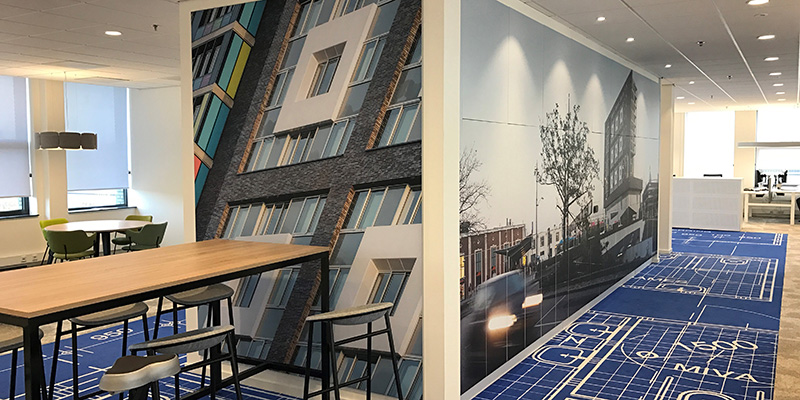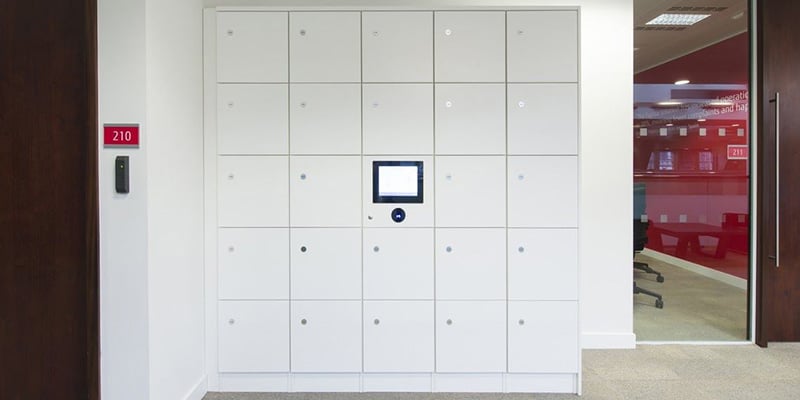2020 has forced everyone to adapt. Designers are being asked to come up with creative, new solutions for the workplace. This article examines workplace solutions that integrate easily cleanable surfaces, touch-less tech and more to provide peace of mind as people return to work.
Remote work is part of the new normal of 2020, yet many businesses are beginning the return to the office environment. As AT&T’s Director of Global Workplace Strategy told a Hermann Miller roundtable, “the workplace is where you get experiences that can’t be replicated in other environments.”
Yet office spaces today need to support social distancing and frequent cleaning to provide safer work environments in the midst of a pandemic. Even after immunizations are available, we can expect some of these workplace solutions to persist into the future too.
Design and environmental changes include:
- Reducing workspace density
- Installing movable walls or locker walls as partitions between spaces to create physical barriers
- Increasing ventilation rates and percentage of circulating outdoor air
- Cleaning and sanitizing regularly, using disinfectants such as bleach
- Redesigning how people move through the workspace to cut the amount of time spent gathering in common areas and overlapping paths of traffic
The trend toward desk sharing or “hot desking” has also hit a speed bump. While revisiting social controls to reduce interactions, many organizations are limiting or stopping the use of shared workstations.
Let’s consider with more specificity how different workplace storage solutions can make a difference in the success of these many new initiatives.
Improving Safety with Workplace Storage Solutions
Reducing density in the work environment is one of the first steps many businesses are taking. A study of a call center by the Korea Centers for Disease Control, found 79 of the 94 people who sat in close proximity on the same floor were infected.
Instead of having workspaces right beside and opposite one another, staggering workstations will offer more social distancing. Staggering shifts and letting people work from home on alternating schedules can support this density-reducing initiative.
Creating more space between employees could also involve moving the existing document or other storage offsite to free up a greater footprint in the workspace environment. A reconfiguration with high-density mobile storage onsite can also help as businesses typically regain as much as 50% of their floor space.
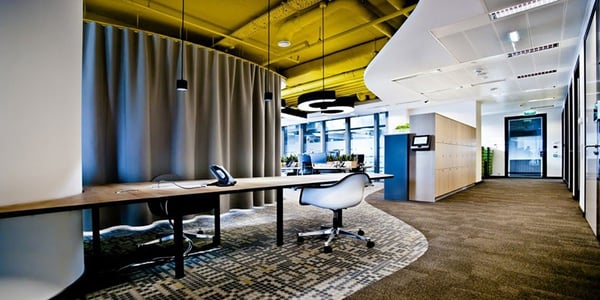
Creating barriers to enforce social distancing and help prevent the spread of disease is causing many to reconsider the use of lockers or movable walls. Low partitions may not be sufficient to stop the spread of the particles that cause COVID-19 to spread, according to a visualization of how the cough particles behave. Alternatives to these low profile partitions are available.
One option many don’t consider is a locker wall. Installing a temporary locker wall partition can provide additional storage for your returning employees to stow their stuff safely. Plus, the lockers can be moved at a later time to a different location in the building as usage trends are identified with the data available from networked locker technology.
Avoiding busy indoor areas reduces the risk of droplet infection while in close proximity to others. This could lead to:
- Turning restrooms into single-occupancy
- Limiting the number of people allowed in a conference room
- Incorporating online meeting room scheduling to reduce wandering around to “see if a room is free” and enable disinfecting of the space before the next group uses it
- Using one-way corridors to minimize disease transmission
- Having employees always walk the office in a clockwise direction
- Introducing standing meetings and meeting out in the open
- Closing community kitchen areas temporarily in favor of making pre-packaged snacks and to-go food available
Retrofitting or Reconfiguring the Workspace
Gensler suggests turning the reception area of a workspace into more of a mudroom-like foyer. Employees, visitors and contractors could all stop in this area to first remove their coats, store their personal belongings and wash their hands using low-touch or no-touch fixtures.
Another approach is to create an office cohort or “neighborhood” of 30 or so colleagues who work together on a regular basis. This would create a social contract-like accountability for the people in that group. At the same time, if one person tested positive, only that neighborhood would be sent home, which could limit the negative impact.
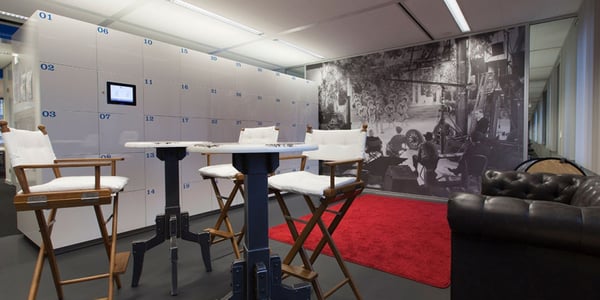
On an individual level, employees are being asked to adhere more strictly to clean desk policies. Removing clutter from desks and then clearing all work surfaces at the end of the workday facilitates workplace disinfecting protocols.
Of course, this approach means people need a place to put their possessions, files and electronic accessories they might otherwise have left out overnight. Touch-less lockers are one option. Others are adding modular storage options into the office design. For example, an island storage unit provides a large, flat space for people to stand around for a brainstorming meeting. Plus, people can stow away supplies on the shelves or cabinets of the unit.
Thinking About Materials, Technology
Along with taking a new view of workspace storage and division of space, architects and building managers can also benefit from newer materials and technology available.
When minimizing the spread of germs and making cleaning and disinfecting protocols easier is the priority, it makes sense to select smooth surfaces, which are easier to clean. Going with materials that don’t degrade with continuous cleaning and hard surfaces that do more to stop or deflect the virus can help too.
Fortunately, those providing workplace solutions were already moving in the direction of antibacterial fabrics and finishes. Copper is getting a lot of attention currently as it is less hospitable to germs than other surface materials. Easy-to-clean laminate or powder-coated steel can also help an organization meet hygiene standards.
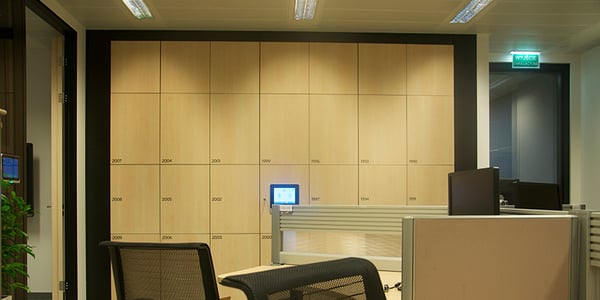
Touch-less technology in lockers also supports the same goals. The lockers operate with contactless smart cards or through Bluetooth (mobile credentials) or WiFi apps to provide a nearly touch-less experience.
With the networked locker connected to overall building management software, it’s easier to distance people. Only making every fifth locker available for employee or guest use subtly enforces social distancing. Additionally, once a locker has been used, it could be disabled for further use until it is properly cleaned.
Plus, in the case of a COVID-19 case, the building can track that individual’s locker use to identify what areas need an even deeper clean. Even in regular cleaning routines, being able to unlock an entire bank of lockers with a touch of a button on a dashboard facilitates greater efficiency of your cleaning crews.
Employees aren’t going to want to return to the workplace unless they feel the business is prioritizing safety. Bring health and wellbeing to the forefront in planning for your post-COVID workplace. These many workplace solutions provide a solid foundation to demonstrate care and responsibility.
Patterson Pope offers many ready-to-go and customized workspace solutions that meet your storage and social distancing needs. Contact us today!



